If you manage a body shop or collision center, your business generates specific wastes that require proper disposal methods. Let’s look at four of these wastes and what the EPA requires to comply with their disposal practices.
It’s also essential to determine if a particular waste is hazardous or not and understand the best practices for disposal.
Let’s look at some common wastes in your body shop.
Paint Booth Filters
Who is changing out your paint booth filters, and what are you doing with them?
Waste Type:
Non-Hazardous
(with exceptions)
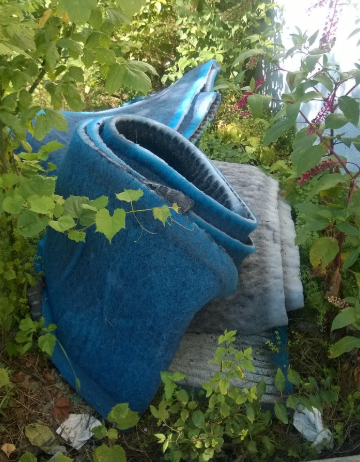
Disposal Best Practices:
- You can throw them in the trash only if you have documentation to prove they are non-hazardous.
- You must complete a TCLP (Toxicity Characteristic Leaching Procedure) test to prove and document that they are non-hazardous. Unless your technicians spray or clean their paint guns directly into the filters, they’re most likely non-hazardous.
- The TCLP test only needs to be completed once unless you change your paint line products. But you’ll need to retake the TCLP test if you switch over to a new paint line.
- You can also have paint booth filters hauled away by a waste vendor if you don’t want to have them TCLP tested.
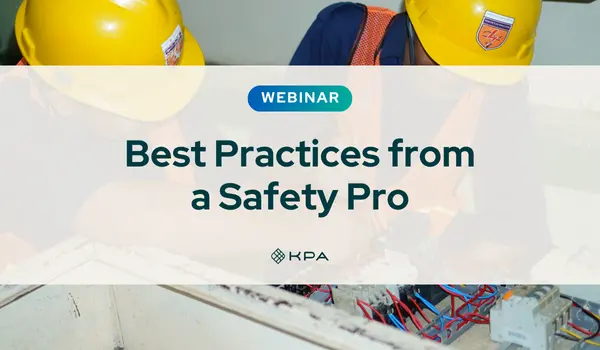
Best Practices from a Safety Pro
KPA's Zach Pucillo, Compliance Expert, shares the most common errors he sees while auditing facilities and the recommended best practices to keep your workforce safe & your company compliant.
Still Bottoms or Pucks from the Solvent Recycler
Do you have a solvent recycler? If so, the bag that comes out of the recycler is called a still bottom.
Waste Type:
Hazardous
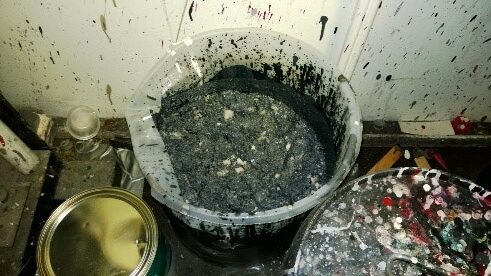
- Do not pay to have this waste TCLP tested.
- No matter the test results, this is a hazardous waste because it’s an F Listed waste in the EPA regulations.
Disposal Best Practices:
- Put this bag of recycled paint (a solid or semi-solid) into a 55-gallon drum and label it as “Hazardous Waste.” Your still bottoms will need to be hauled away by a hazardous waste vendor.
Water-Based Paint Waste
Are you spraying a water-based paint? If so, you need to be aware of how to manage this waste stream properly.
Waste Type: Non-Hazardous (with exceptions)
- Even if your paint vendor has said it’s non-hazardous and can be thrown in the trash, there are additional steps you’ll need to document.
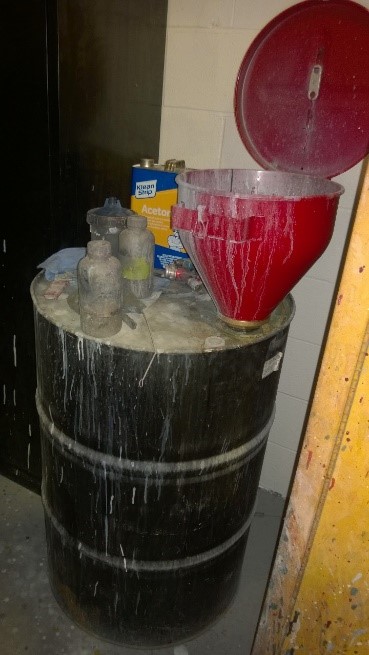
Disposal Best Practices:
Option #1:
- Put all solvent paint waste into a 55-gallon drum, label it as hazardous waste, and have it hauled away as such. This includes all waste that’s solvent generated.
- Don’t let the paint harden in the plastic liners and throw these in the trash. This is considered disposing of hazardous waste paint in the trash and is an EPA violation. Painters should drain all paint from their paint cup into the waste drum instead of letting it harden.
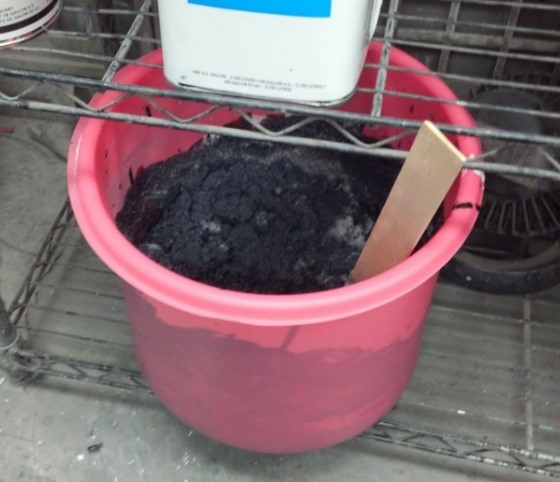
Option #2:
- Mix the white powdery substance that your paint vendor provided that, when mixed with the waste paint (water-based only), acts as a coagulant and will harden the waste.
- Complete the TCLP test on this waste to determine if it’s non-hazardous and can be disposed of in the trash. The TCLP test is a one-time test and only needs to be repeated if there is a change in the chemical or paint product being used. The exception to completing this lab test is having every SDS for each paint included in the container readily accessible and adequately compiled if requested during an EPA inspection.
Solvent-Based Paint Waste
Most collision centers and body shops to generate solvent-based wastes. This is because all clear coats are still solvent-based. Even if you are spraying a water-based paint, you are still spraying a solvent-based clear coat and generating solvent-based paint waste.
Waste Type:
Hazardous or Universal
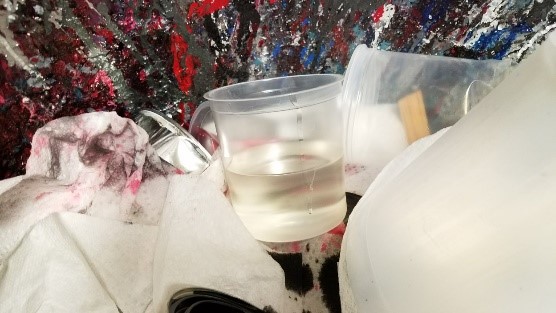
Disposal Best Practices:
Option #1:
- Put all solvent paint waste into a 55-gallon drum, label it as hazardous waste, and have it hauled away as such. This includes all waste that’s solvent generated.
- Don’t let the paint harden in the plastic liners and throw these in the trash. This is considered disposing of hazardous waste paint in the trash and is an EPA violation. Painters should drain all paint from their paint cup into the waste drum instead of letting it harden.
Option #2:
- Put the waste solvent into a solvent recycler, leading to the still bottoms disposal methods discussed above.
Option #3:
- Collect the waste and have it hauled away as universal waste.
- This is only an option if your waste vendor manages it as a universal waste. If not, then you won’t be able to label it and manage it as such.
- The benefit to managing this as universal waste vs. hazardous waste is that you can possibly downgrade your hazardous waste generator status, which could lower your regulatory requirements and potentially save you money.
- This option for universal waste management is state-specific. Double-check with your state EPA regulations to verify that this is a viable option. Or, ask your KPA consultant – they’ll give you the details.
All body shops or collision centers generate waste that needs to be hauled away in some capacity.
From our consultants’ experience…If you do not have some type of waste hauled away, you are probably not fully compliant with EPA regulations.
Clear as mud (or murky paint, maybe?) KPA can help.
KPA offers environmental risk management services to assist you in managing chemicals and hazardous waste at your facilities. We help you document procedural compliance and provide guidance on minimizing waste generation and appropriately managing and disposing of wastes.
Our compliance inspections, plan development, and permitting assistance will help you resolve your environmental compliance challenges.
Related Content
Explore more comprehensive articles, specialized guides, and insightful interviews selected, offering fresh insights, data-driven analysis, and expert perspectives.

